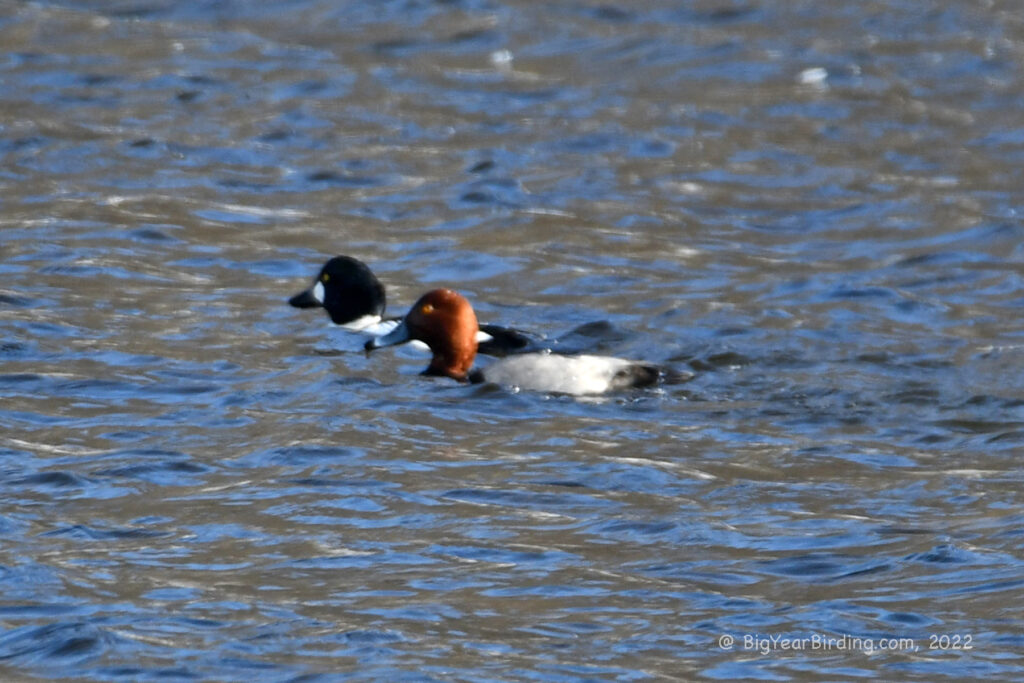
The Redhead is a medium-sized diving duck that is native to North America. Adult males typically measure 19-22 inches in length and weigh between 2-2.5 pounds, while females are slightly smaller, measuring 17-20 inches in length and weighing between 1.6-2.2 pounds. The species is sexually dimorphic, with males exhibiting a striking red head and neck, a gray body, and black chest and tail feathers. Females are more subdued, with a brownish-gray head and body and a bluish-gray bill. Both sexes have yellow eyes and black legs and feet.

One of the most distinguishing field marks of the Redhead is its bright red head and neck, which contrasts sharply with its gray body. Additionally, males have a black chest and tail feathers, while females have a bluish-gray bill and a distinctive white patch at the base of the bill. In flight, the species displays a white patch on its wing that is visible from a distance.
Redheads are migratory birds that breed in the northern prairies of North America, including the Dakotas, Saskatchewan, Manitoba, and Alberta. They typically arrive on their breeding grounds in late April or early May and begin nesting soon after. In the fall, they migrate south to wintering grounds along the Gulf Coast and in Mexico, with some individuals traveling as far south as Central America. During migration, Redheads can be found in a variety of habitats, including freshwater marshes, lakes, and coastal lagoons.

While Redheads are not considered threatened or endangered, their populations have declined in some areas due to habitat loss and degradation. Conservation efforts have focused on protecting and restoring wetland habitats, as well as managing hunting pressure and reducing the risk of oil spills and other environmental hazards. Despite these challenges, Redheads remain a common and beloved species among birdwatchers and waterfowl hunters alike.

